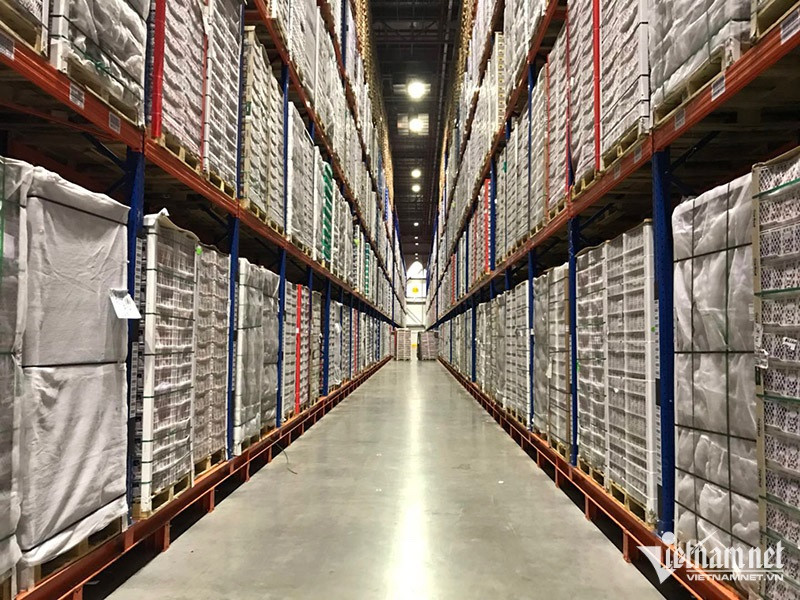Vietnam is a producer and exporter of many agricultural and aquatic products. The domestic market is developing thanks to the strong expansion of modern retail chains and food services and convenience stores. However, the preservation process of agricultural products is still incomplete.
According to a study published by CEL Consulting in 2019, the average loss during production and post-harvest stage of Vietnam’s fruit, vegetable, meat and seafood was 25.4%, 5.3% higher than the standard.
This study showed that only 14% of producers used cold chains, except for the seafood industry with 42.1%. While the rate of cold chain usage of exporters was 66.7%, only 8.2% of manufacturers and suppliers for the domestic market applied cold chains.
In 2019, Vietnam had 48 cold storage locations with a capacity of 600,000 pallets, 700 refrigerated trucks and 450 refrigerated container wagons. Cold storage could only meet 30-35% of the demand for preserving food, agricultural and aquatic products.
Caption: Vietnam's cold storage real estate segment is growing and is forecast to reach a value of USD 295 million by 2025.
In 2020, only 8.2% of domestic food manufacturers used cold chain systems, while export manufacturers accounted for 66.7%. In addition, the distribution network did not develop enough to provide safe and efficient services, creating gaps for potential suppliers.
Vincent Goalard, representative of International Pharma Services, said the cold supply chain is important in the field of medicine and healthcare. Vaccines are required to be stored continuously at a temperature of 5-8 degrees Celsius, and if this criterion is not met, the vaccine may lose its effectiveness or cause harm to humans. Only a handful of carriers can meet this requirement, mainly large hospitals.
Ms. Trang Bui, General Director of Cushman & Wakefield Vietnam, said that, compared to other developed markets in the region, the cold chain market in Vietnam is still young and fragmented.
The cold chain market in Vietnam reached about $169 million in 2019. The market is expected to reach $295 million by 2025, or a growth rate of about 12% annually.
Cargo storage space has become increasingly important as Vietnamese goods join the global value chain. The cold storage sector in Vietnam has become an attractive field in recent years, driven by import and export orders for medicines and vaccines, along with the growth of food delivery and e-commerce, which is expected to reach $15 billion by 2025, according to the e-Conomy report by Google and Temasek.
The growing middle class allows consumers to have more access to quality and fresh organic products. As a result, the demand for cold storage has increased, promoting investment trends in cold supply chains and new development opportunities.
Niche-market opportunity

According to the Refrigeration Industry Organization’s 2019 report on cold storage service capacity in Vietnam, more than 50% of businesses provide 6 to 7 cold storage services.
More than 20% of enterprises provide 9-11 cold services and 20% provide fewer than five. A very small number of businesses can provide 16 cold storage services.
Cold storage is generally concentrated in clusters, mostly based in industrial parks or in river-ports and seaports. The two main branches of the domestic market are commercial cold storage and self-operated cold storage.
The cold storage market is more developed in the southern region, largely due to the development of the fisheries and agriculture sectors. In particular, Long An province is home to a large number of cold storage units because it is closely connected to the Mekong Delta – the country’s agricultural basket - and is located next to Ho Chi Minh City.
The lack of cold storage supply in Vietnam is creating great room for investors.
Experts from Cushman & Wakefield say that investment in cold storage is increasingly expensive due to the cost of installing insulation materials and machinery, but the high rental price is a strong motivation for investors. Investors may consider converting conventional warehouses into cold storage to exploit the rental difference.
In the medium and long term, infrastructure development is key to increasing the cold chain supply, including specialized logistics hubs. Vietnam's cross-border trade process, including time and costs, still needs significant improvement.
The cold storage market in Vietnam is expected to experience explosive growth alongside the latest advancements in vaccine development.
Even after the pandemic is over, this growth rate will continue to be sustained by a number of factors, including rising consumer demand for perishable foods and the advent of new treatments.
Duy Anh